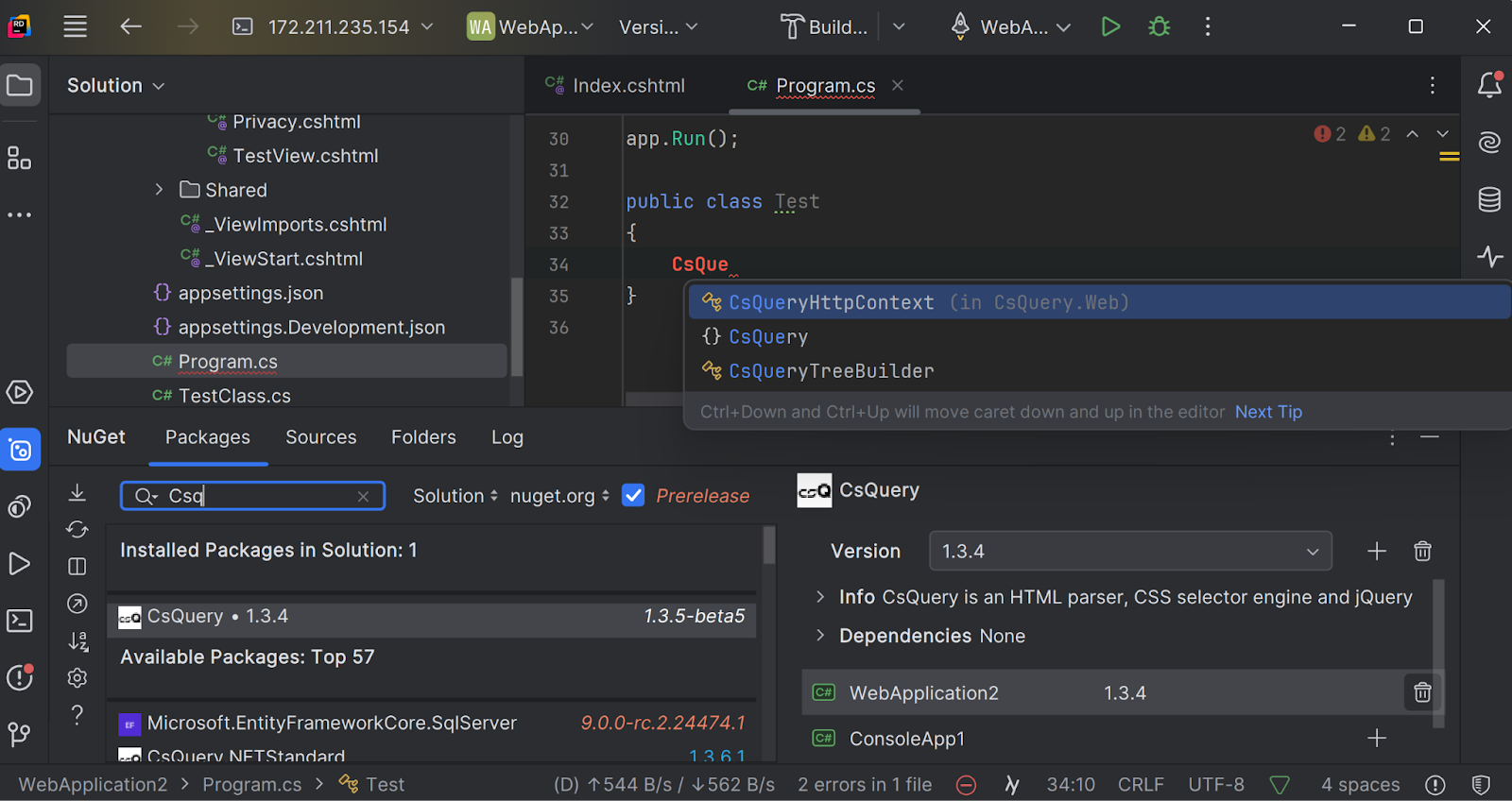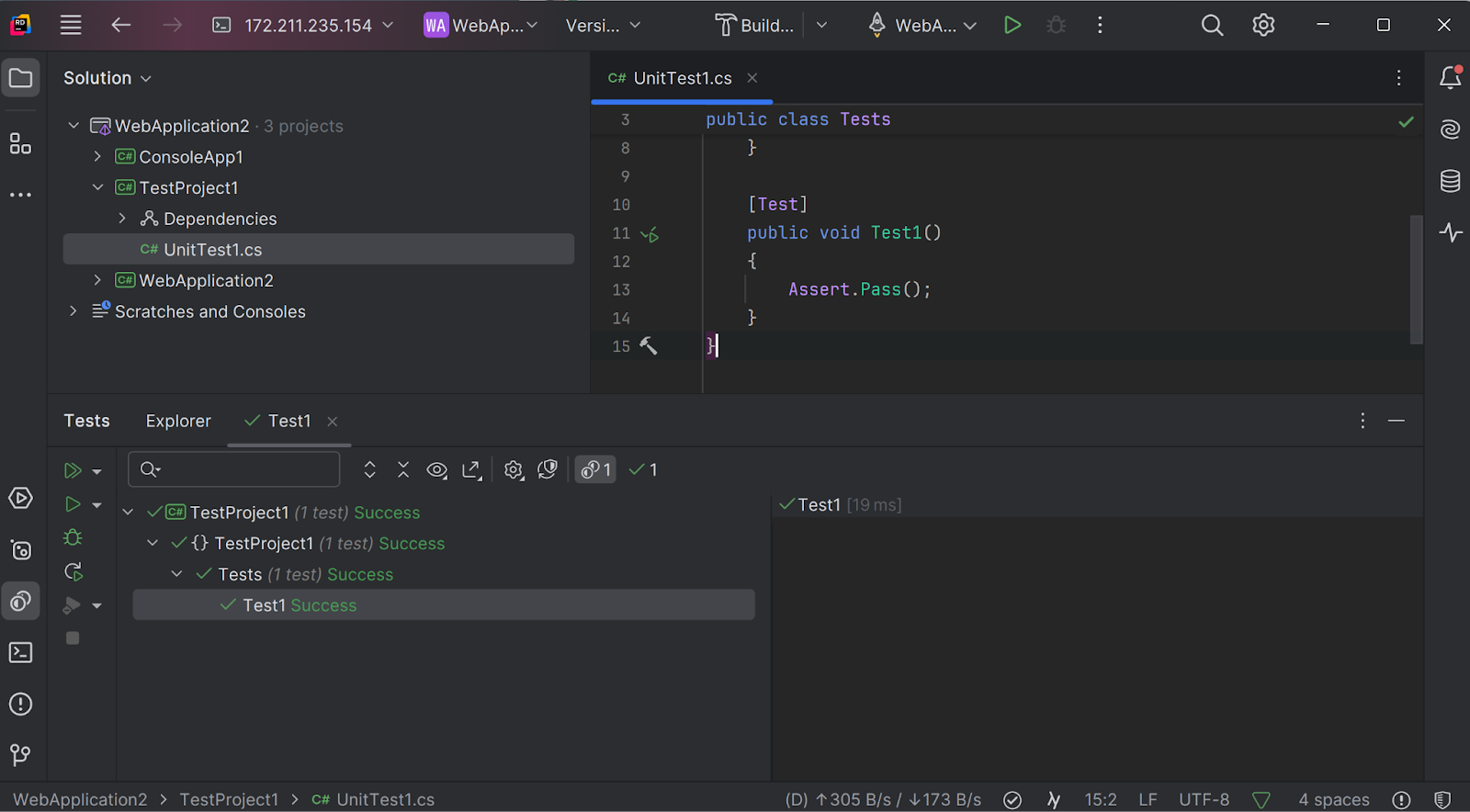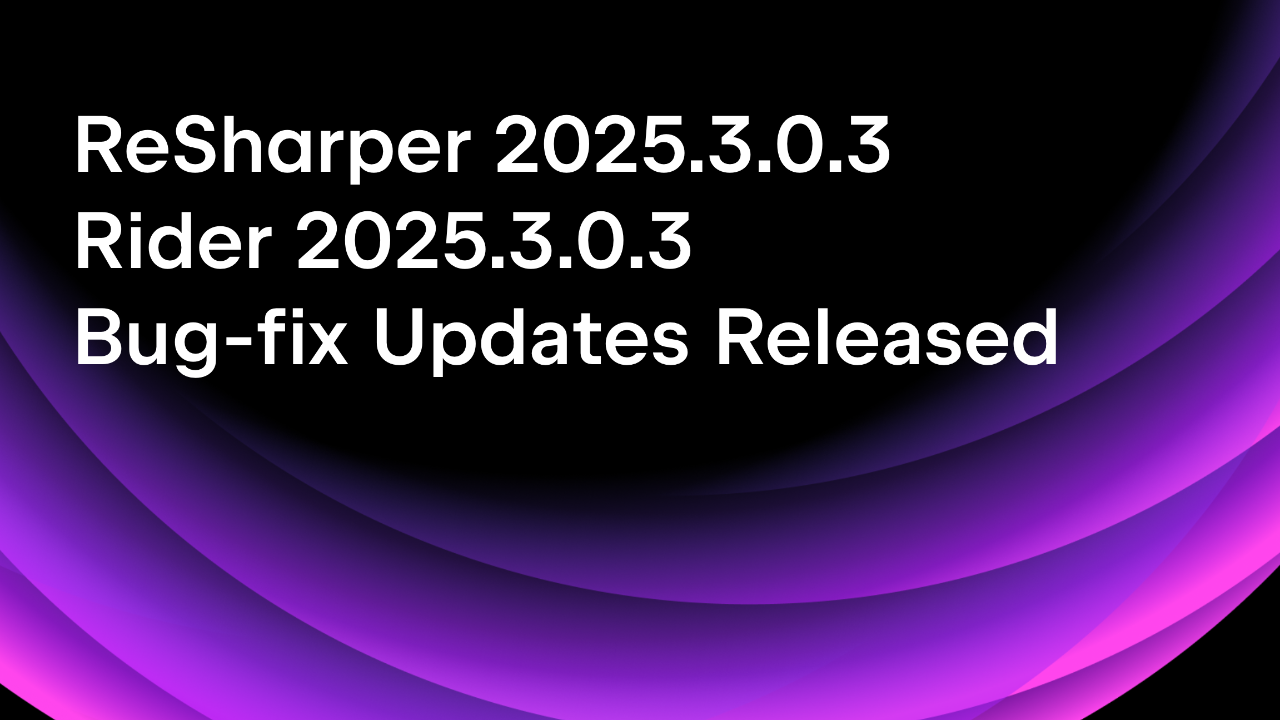.NET Tools
Essential productivity kit for .NET and game developers
Remote Development in Rider 2024.3
Remote development has long held promise for developers seeking flexibility. However, only in recent years has it become an indispensable part of modern development workflows that prioritize collaboration and scalability. Nowadays, developer teams often need to work from different locations while leveraging high-performance, shared environments that feel as reliable as their local setups.
With JetBrains Rider 2024.3, the remote development functionality completes its Beta phase, delivering a polished and consistent experience. This release brings infrastructure designed to make remote work feel familiar and dependable, so you can code with confidence wherever you are.
If you’re new to Rider’s remote capabilities or curious about its evolution, we recommend reading our blog post from March 2023 for a deep dive into its journey. For detailed guidance on getting started with the setup, visit Rider’s documentation.
One important note: Linux is currently the only supported OS for remote hosting. With that in mind, let’s explore the workflows that remote development supports and see how closely they match the experience of using Rider on your local machine.
Editing
In this release, we focused on optimizing the editor to reduce latency and ensure real-time responsiveness, making remote typing feel as natural as it would on a local setup. This improvement allows for a smooth, uninterrupted flow as you write and refine code.
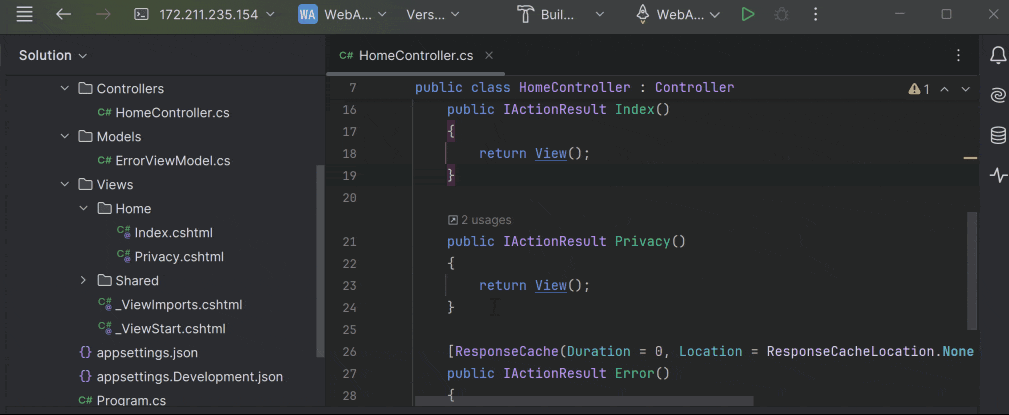
Hot Reload
With Hot Reload, your code changes apply instantly, letting you test modifications immediately without restarting your application – a convenience that’s particularly important when working in remote environments.
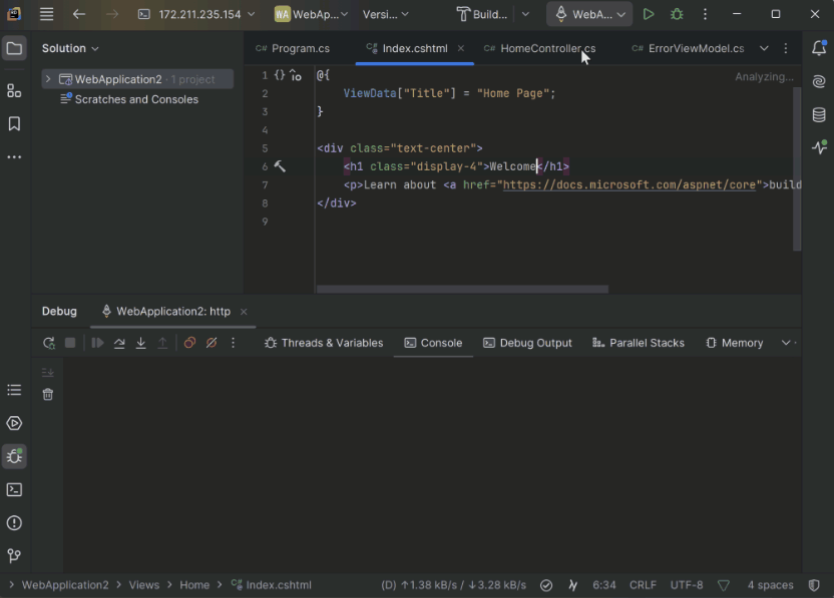
To ensure that the changes applied to the application running on the remote machine are accessible in your local browser, Rider will forward the relevant open port from the remote machine to your local environment via the existing SSH connection.
The port forwarding process is semi-automatic: a dialog will pop up, asking if you’d like to open the URL. By clicking Open, you agree to forward the port, making the remote application accessible as if it were running locally. Additionally, you can check the Do not ask for ‘localhost’ box to streamline future access, allowing Rider to forward similar URLs without prompting.

Debugging
Rider’s remote debugging aims to bring the same intuitive, snappy experience you’re used to locally. With the ability to set breakpoints, inspect variables, and step through code, debugging remotely feels smooth and familiar.
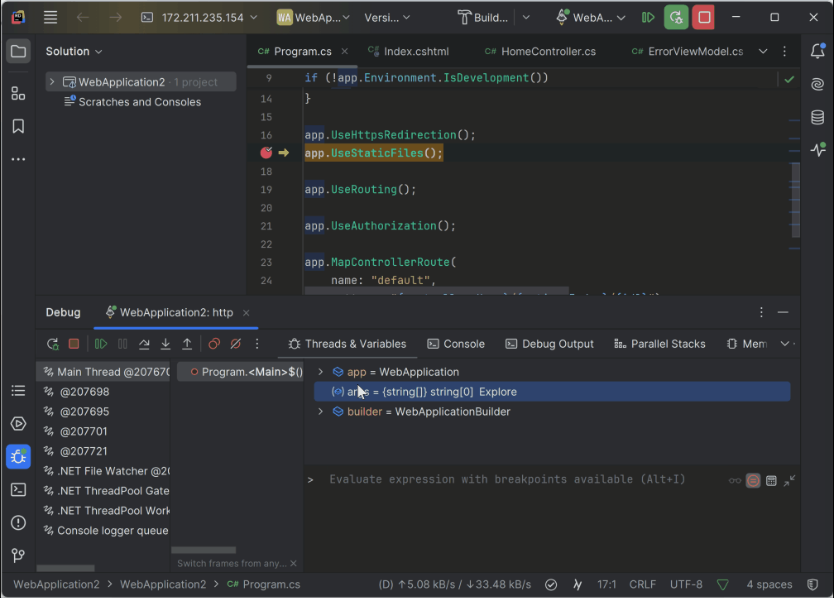
Project and NuGet management
Rider’s remote development functionality offers you rich control over creating and managing projects based on the SDKs installed remotely. Such a setup means there’s no need to sync files back to your local machine, which is not only more efficient, but also enhances security by keeping all project data in the remote environment.
NuGet package management via remote development is just as seamless. Rider 2024.3 lets you add, update, and manage dependencies directly on the remote machine, ensuring that package management feels familiar and intuitive, but without any need for local synchronization.
Unit testing
Run and evaluate unit tests on your remote project with ease. The test runner delivers immediate feedback, allowing you to make quick adjustments and ensure code quality – no matter where you’re working from.
Version control
Integrated version control makes it easy to keep code synced across environments. Directly manage commits, pulls, and pushes within the IDE with version control that is as streamlined and efficient as it is on local setups.
Diagnostics widget for the main toolbar
Once you’ve established a remote connection, you’ll see that the main toolbar now features a new widget, which you can access by clicking on the remote connection address.

The widget provides a quick but comprehensive view of the status of your remote development environment. The Backend Status Details offers metrics such as CPU load, memory usage, disk space usage, and latency – all essential for monitoring resource consumption on the remote machine.
In addition to performance data, the widget also includes tabs with controls for managing the connection, allowing you to view network port configurations, output logs, and settings specific to the remote environment.
With Rider 2024.3, remote development workflows are closer than ever to a local experience. From editing to testing, the goal has been to make each workflow familiar and free of lag and latency.
We’d love to hear how remote development fits into your workflow, so please share your feedback. Your insights will help us continue shaping and refining the experience to serve your needs better.
Subscribe to a monthly digest curated from the .NET Tools blog:


